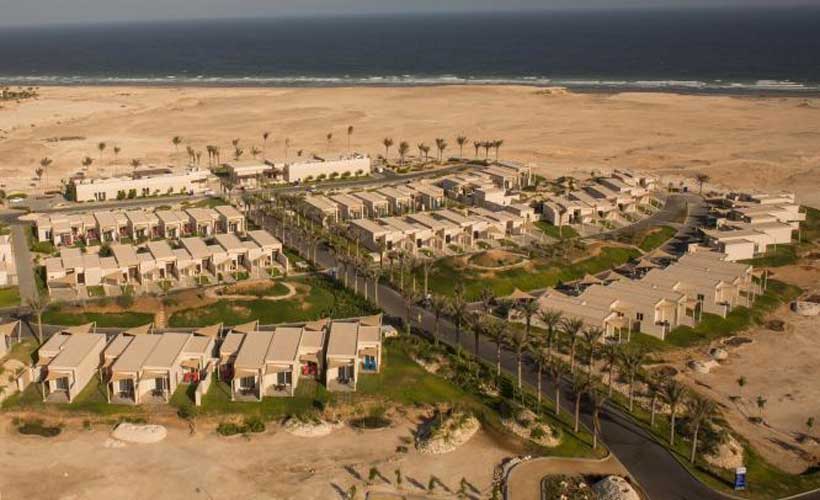By Mathew Rochat
On October 25th, 2021, a ceremony took place to celebrate the opening of Duqm Hongtong Piping Factory, the first factory in the newly developed Sino-Omani Industrial City located 300 miles from Oman’s capital, Muscat. The factory is located within the Special Economic Zone at Duqm (SEZAD), a once sparsely inhabited fishing village that has transformed into a coastal boomtown ever since its designation as a special economic zone (SEZ). SEZAD is one example among a growing number of SEZs that have spread throughout the globe in the past 50 years.
According to UNCTAD, there are now over 6,000 SEZs around the world located in nearly 150 countries. With as few as 79 SEZs in existence in 1975, their proliferation has been rapid. Though SEZs have been welcomed and promoted in many emerging economies ranging from India to Nigeria to Panama to the United Arab Emirates to Malaysia, no country has been more embracing of the SEZ-led development model than China. So, what are special economic zones, what explains their proliferation in recent decades, and where do they fit in within the 21st century global economic system?
What Are Special Economic Zones?
Referred to in some instances as “free trade zones” (not to be confused with “free trade areas”), there is a great deal of diversity when it comes to different types of SEZs, varying from high tech zones, industrial and eco-industrial parks, export processing zones, free ports, bonded warehouses, and more. SEZs are defined by the World Bank as areas “in a country that [are] subject to different economic regulations than other regions within the same country.” These areas are typically characterized by more liberal economic laws, offering advantages to investors who are physically situated within the zone such as duty-free benefits, tax incentives, relaxed labor and land-use restrictions, and streamlined procedures. SEZs are typically established with the aim of attracting foreign direct investment (FDI), accelerating industrialization, promoting technological innovation, creating jobs, boosting exports, experimenting with new regulations and policies, and supporting strategies of broader economic liberalization.
The Proliferation of SEZs
Though the concept of free ports goes back as far as the Italian Renaissance, the advent of the modern SEZ dates back to 1959 with the establishment of an international business park in Shannon, Ireland. The free trade zone was built in the vicinity of Shannon Airport, which had previously served as a transit hub and refueling station for trans-Atlantic flights. Anticipating that airplane technology would soon allow flights to bypass the area altogether, the then director of Shannon Airport developed a plan to transition the economy away from its dependence on commercial flights. This plan involved the creation of Shannon Free Zone (SFZ), which offered tax incentives and tariff reductions with the goal of attracting FDI. At present, SFZ is still home to some 170 companies and provides jobs for more than 8,000 employees.
Following the pioneering model of SFZ, other SEZs began to appear alongside airports, seaports, and border territories throughout the 1960s. With export-oriented industrialization (EOI) gaining popularity as a strategy for economic growth in East Asia in the 1980s and 1990s, the number of SEZs continued to grow, reaching approximately 3,000 by the turn of the 21st century. A key turning point in the history of SEZs is linked to Deng Xiaoping’s Open Door Policy, which led to the creation of the first SEZs in China in 1979. The goal of the Open Door Policy was to end China’s isolation and foster economic growth to compete with western industrialized democracies. Consequently, CCP authorities established four SEZs along China’s eastern seaboard in Shenzhen, Zhuhai, Shantou, and Xiamen.
Since that time, the SEZ experiment in China has been a remarkable success story. China’s explosive growth since the 1980s would not have been possible if not for these special economic zones that have accounted for as much as 22% of GDP, 45% of total national FDI, and 60% of exports. As of 2021, China is home to an estimated 2,500 SEZs in total. The successful experience in China has also sparked a new wave of SEZs throughout Asia in places such as the Philippines, Thailand, Indonesia, Laos, Cambodia, Vietnam, Malaysia and Myanmar. Outside of Asia, SEZs are also gaining traction in other parts of the world including Africa, the MENA region, and Latin America. In addition to hosting SEZs and serving as a model for SEZ development, China has also promoted the establishment of SEZs abroad through Chinese Overseas Economic and Trade Cooperation Zones. These state-supported ventures between Chinese companies and local partners are at the heart of the global infrastructure development strategy known as the Belt and Road Initiative.
A New Model of Economic Development
These enclaves of liberal economic activity represent a new model of economic development. What began as experimental, fringe elements of the global economic system in the 20th century are now transforming into central features in the 21st century. As a result of SEZs, many formerly undeveloped areas have experienced rapid growth. However, the question remains as to why countries don’t simply liberalize their entire economies? Why opt for small zones of capital development instead of embracing a market-based system more openly?
There are a few possible explanations for this. The first pertains to ideology, as skepticism of capitalism remains high. Leaders may be reluctant to impose radical and wide-ranging market reforms that merely imitate western models. In this way SEZs allow for small-scale experimentation as opposed to jarring systemic change that could risk engendering instability and unrest.
Second, full-scale liberalization is an expensive endeavor. Cultivating a prosperous environment requires a population that is healthy and educated with access to well-developed infrastructure such as electricity, plumbing, roads, and internet technology. Providing these goods for an entire population is simply not an option for many developing countries. SEZs provide a viable alternative that deploys scarce resources more selectively.
Third, emerging economies may feel that their domestic industries are not yet capable of competing globally. In such cases, full-scale liberalization could ultimately do more harm than good as producers would be thrust directly into competition against producers from advanced, industrialized countries. The previous experience of developing countries adopting structural adjustment reforms serves as a cautionary tale. SEZs, on the other hand, allow firms to benefit from access to outside investment, while remaining insulated from global competition.
Looking to the Future
The Duqm Hongtong Piping Factory in SEZAD embodies the growing trend of special economic zones, which now exist throughout much of the developing world. It is possible that SEZs may serve as stepping stones for more wide-ranging liberalization efforts. Alternatively, they may continue to represent a novel model of economic development. As a leader of the SEZ-led development model and one of the world’s largest economies, China will continue to shape the evolution of the global economic system, and along with it, the role that SEZs will play.
Courtesy: Modern Diplomacy





 TRENDING12 months ago
TRENDING12 months ago
 PROFILE9 months ago
PROFILE9 months ago
 BUSINESS & ECONOMY3 years ago
BUSINESS & ECONOMY3 years ago
 BUSINESS & ECONOMY3 years ago
BUSINESS & ECONOMY3 years ago
 BUSINESS & ECONOMY3 years ago
BUSINESS & ECONOMY3 years ago
 HALAL ECONOMY10 months ago
HALAL ECONOMY10 months ago
 SPECIAL REPORTS5 months ago
SPECIAL REPORTS5 months ago
 BUSINESS & ECONOMY3 years ago
BUSINESS & ECONOMY3 years ago



